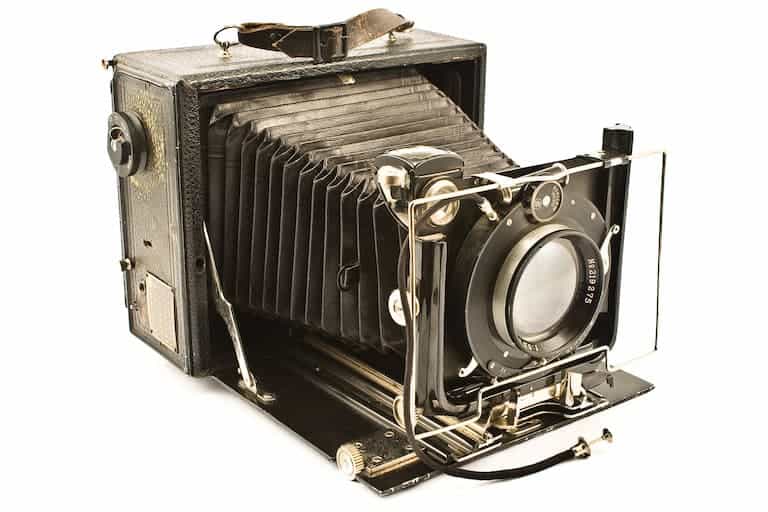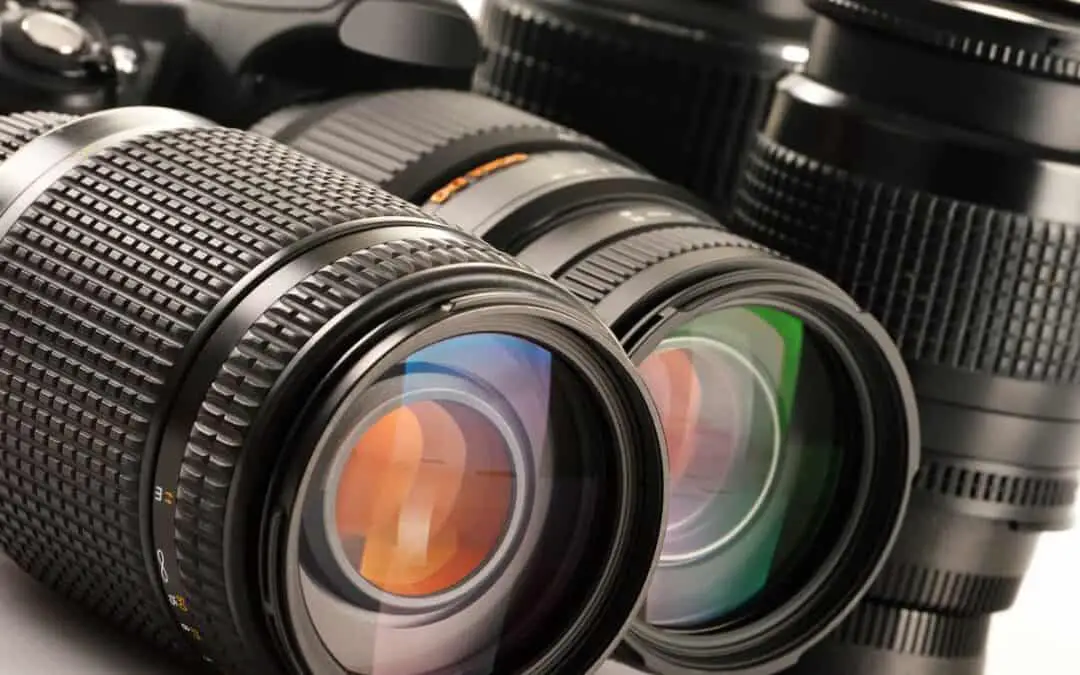Cameras are arguably one of the most incredible and essential inventions in our species’ history. They allow us to record data, make memories, and exchange information, though how they work remains a mystery to many. If you’re wondering why camera lenses are typically black, you may be surprised to find the answer.
Camera lenses are black because it helps to absorb UV sunlight and black plastic is cheaper to add to the camera than metal. Colorful lenses would reflect light and bounce it back into your image, and a metal lens would do the same. Additionally, the lenses are black to maximize profit.
Though you may have hoped for a more scientific answer, the breadcrumbs all lead back to reflection and profit. Below, we’ll go over the reasons why camera lenses are black one by one and give a brief overview of how lenses work. Additionally, we’ll walk you through the history of cameras of different types.
Table of Contents
Why Is the Lens of a Camera Black?
The lens of a camera, when you’re looking straight into it, is typically black. Additionally, the outer edges of your camera are most often going to be black versus red, white, or different brighter colors. You may wonder if this is an optical illusion or the actual parts the camera is made with.
Camera lenses are black to prevent the UV light coming from outside the camera from reflecting. Reflections of light would add light flares to pictures or make the light too blaring to see the picture. Additionally, black plastic is less expensive.
When we talk about the lens of a camera, we are talking about what we see when we look inside it. Even if you have a fun yellow camera or a pink one, the inside lens will always be black. Nine times out of ten, your camera will be so pitch black you can’t see through to the other side when they’re attached to the camera.
Though there are cameras that have colorful outsides or plastic, very few have lenses that you can look into and see a different color. Arguably, carbon black helps the most in retaining the integrity of a picture.
Brief History of Camera Lenses
Cameras have come a long way since their invention. They were once giant things that shot out a blinding light and took hours to produce a photo. Now, we can take high-quality photos from the phones in our pockets. Camera lenses and the invention of the camera are two different scenarios entirely, though.
The first camera was invented in 1816, and though it also had a black lens, it’s not the same kind of lens we think of today for our cameras. Professional photographers often switch out their lenses to get different effects. The first detachable lens as we know it was invented in 1839. By their technical definitions, people used lenses for various purposes other than photography.

Anatomy of a Camera
Any given camera has a sensor, a shutter, a body, a lens, and an aperture. Most cameras attached to our phones have a different version of these basic parts. Additionally, professional cameras come with interchangeable lenses. The lenses are the most expensive part of the entire camera.
There are quite a few different types of lenses. You might be familiar with:
- Macro Lenses
- Telephoto Lenses
- Wide Angle Lenses
- Standard Lenses
- Fisheye Lenses
- Tilt-Shift Lenses
- Infrared Lenses
This video showcases the different effects different lenses have:
Each has a different function based on its length, aperture, and depth. The length of the camera lens adjusts for how much of a certain image will be captured. The aperture allows for the amount of light in a photo. The lens’s depth determines how far away two things within focus can be (think you are standing in front of the Eiffel Tower or another landscape from a long distance away).
There is no perfect lens, and the lens you need for your camera will depend greatly on what you intend on using your camera for. However, you’ll notice that many camera lenses are black. That’s because it accounts for the reflection of the camera.
Reflection Issues
Having a camera with bright colors may reflect light instead of absorbing it, causing light flares in your photos or not capturing the image as intended. Black absorbs any light and can ensure that photos are at the best brightness for viewing.
Cost of Parts
Additionally, though you may pay quite a bit for your camera lenses, you’re not paying for the price of the plastic surrounding the glass. This video explains why the cost of black carbon plastic is less expensive:
Camera lenses are complex and expensive for a good reason. However, they’d be much more expensive if the lens surrounding the glass was made of metal or more expensive plastic.
This is not to say that the camera lens you are working with is cheap. Black plastic is a standard for most camera companies. Few companies do white on their professional lenses, and fewer do any brighter colors.
The professionalism of Black Lenses
Cameras are also often black just for the aesthetic. A fully black camera tends to look more professional than a pink or blue camera, so professional photographers look for sleeker cameras to help credit themselves and their business.
Suppose you think about it in terms of visibility, as well. In that case, patrons of sporting events or even weddings are more likely to see a black camera lens sticking out and not run into it.

Final Thoughts
Though you might have thought the reasoning behind your black lenses was more scientific, it is pretty straightforward. Black plastic is better at absorbing and filtering out the light from your photos.
However, some of the most significant reasons for the lenses being black are that they look more professional or sleek, and they often cost less than thick metals or colorful plastics.



